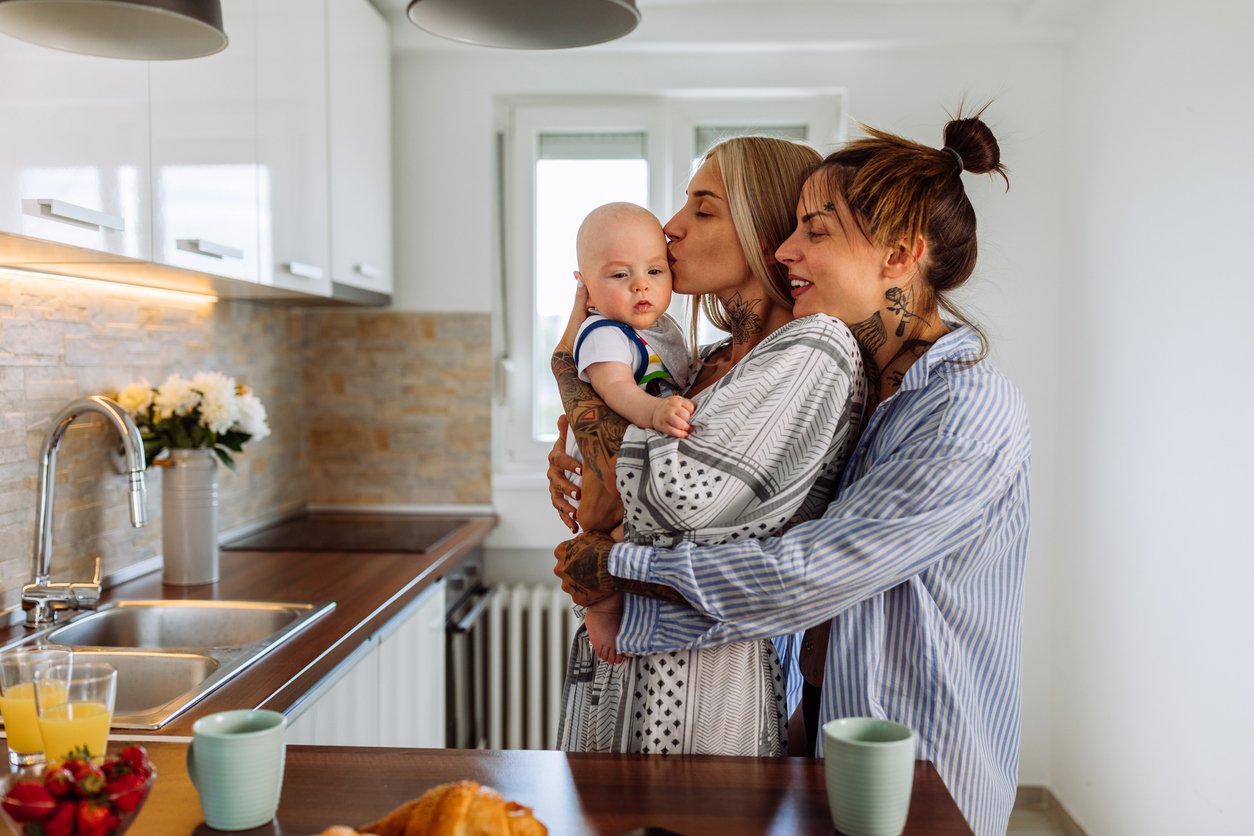Glossary of adoption terms
Adoption England has a glossary of key terms around adoption. We’ve summarised the key ones below to help you on your adoption journey.
Find the full list on the Adoption England website.
-
Adoption is a legal procedure that transfers all the parent's responsibilities to the adoptive parents. The adopted child becomes a new member of the adoptive family, and they receive the same rights as if they were born into that family. The birth parents of the child lose all rights or responsibilities for the child.
-
Adoption agencies assess prospective adopters to preparation for adoption. Stage 1 of the assessment includes initial meetings, identity and background checks and references and preparation. This should take no longer than two months, although due to delays with statutory references this is currently taking longer. Stage 2, sometimes called a ‘home study’ takes four months, during which a social worker will work in depth with prospective adopters to assess their strengths and suitably to become an adoptive parent. In the case of adoption of a child in care in England, the cost of assessment is covered by adoption agencies, not by prospective parents, although in some places the medical health assessment report may need to be paid for but agencies vary in this regard.
-
This is the final court order which gives approved adopters full and permanent parental responsibility for a child. An adoption order can only be made with the consent of the birth parents or if the court has dispensed with the birth parents’ consent. The order is issued by the Family Court, on the application from the prospective adopter/s. The adopter/s will then be provided with an adoption certificate bearing the child’s new surname (if changed) which becomes the child’s formal identifying document.
-
Adoption panels make a recommendation on suitability to adopt regarding prospective adopters, the proposed plan for a relinquished child for adoption and makes a recommendation regarding a child to be matched with a specific adopter.
-
This is a range of support and services that can be accessed by adoptive parents, adoptees and birth relatives. Sometimes this is referred to as post adoption support. These include newsletters, advice, peer support, family support, workshops and training, counselling, therapies, legal and medical advice and assessments.
Read more about the support Adoption Counts offers here.
-
Bump into meetings can happen following the decision to proceed with the adoptive placement and before adoption panel. Prior to the child being given information about their new family, the foster carer and adopters arrange to meet in a park or another location familiar to the child. The child should be prepared for the meeting and be advised of who the adult/s are. The purpose of this meeting is to give the adoptive family the opportunity to see the child in a neutral environment and to support putting written information into context. This visit is to be child led and is recommended not to be more than 30 -60 minutes.
-
This is the place where a child in care lives. Children in care may live with foster carers, in a residential children’s home or living in residential settings like schools or secure units.
-
A child who has been in the care of the local authority for more than 24 hours is known as a looked after child, or referred to as children in care, a term which many children and young people prefer.
-
This is an important document and is completed by a child’s social worker and has detailed information about the child’s life experiences, birth family, health and the circumstances that led to the child being in care. It provides essential information about the child’s background and heritage which is used in the matching process. It helps prospective adopters decide whether they feel they can meet the needs of a child.
Adopted adults can also request a copy of their CPR, and it contains important information about their life history.
-
An Early Permanence Placement (EPP) is also known as Fostering for Adoption (FFA). Both terms refer to the situation where children may be placed in their home at the earliest opportunity by being placed with adopters who are also approved as foster carers, who initially foster the child and may become their adopters if the courts make a decision that a plan for adoption is agreed and make a Placement Order, once the court proceedings have been concluded. EPP or FFA can also be known as concurrent planning.
You can read more on our website here. -
These are organised by adoption agencies to provide general information to members of the public interested in becoming adopters. They are sometimes in person and sometimes online and are a great way for prospective adopters to get a feel for how different agencies work and to hear from adopters who often share their experiences at these events. These meetings cover a lot of information about the children, the process and support available and are very helpful in enabling people to decide whether adoption is right for them and in choosing an adoption agency.
You can book onto one of our information events here.
-
This is a term that applies to the period after the match between child and prospective adopters has been agreed by the Adoption Agency Decision Maker, following matching panel. Introductions are a carefully managed way of supporting the child’s move from their foster carers to adopters, agreed during a placement planning meeting. Typically, they take place at the foster carer’s home initially and adopters will spend more and more time with the child gradually taking over the care of the child. The introductions will then move to the adopters’ home, sometimes with support of the foster carer. The length of introductions is tailored to the individual needs of the child or children. Individual children and children within sibling groups vary considerably in their willingness and time taken to build trust in new people. Much will depend on their background history, emotional and actual age and stage of development, their previous moves, and the length of time living in the current foster family.
-
Relationships between a child and their birth family (plus others who have been important in their lives) must always be considered when a child is adopted. The child’s needs are central to any plan which must also take account the views of all those detailed within the plan. Staying in touch may be direct (face to face) or indirect (through letterbox /information exchanges). Direct contact will often take place between an adopted child and their siblings, who may be living in other adoptive or foster families. An initial face to face meeting or meetings between adopters and birth parents or relatives is expected to take place, unless there are reasons this is not safe to do so, with consideration given to the best way to stay in touch. Individualised arrangements combined with life story work and diverse information sharing methods, help children in navigating loss/separation, understanding why they were in care, promotes stability in adoptive placements, facilitates the integration of their past and present to develop a coherent identity and is a potential resource in a child's developmental recovery.
-
Adopted children are helped by their adoptive parents or their social workers to understand their personal history and develop their sense of identity, through an ongoing process of life story work. This includes who they are, their birth family, why they were taken into care and their early life experiences, and how they came to be adopted. This can help a child to feel more settled with their adoptive family and deepen bonds within the family.
-
These are children in the care of a local authority. A child may be looked after by a local authority on a voluntary basis with the agreement of the child’s parent/s, or because the courts have issued a court order placing the child in the local authority’s care. Children adopted from care are considered previously looked after children, particularly with respect to education and the Adoption Support Fund (ASF). Matching is the process of finding a suitable adoptive family for a specific child (see also family finding). Once a suitable family has been identified this will then proceed to an adoption matching panel for consideration.
-
Matching is the process of finding a suitable adoptive family for a specific child. It’s also known as family finding. Once a suitable family has been identified this will then proceed to an adoption matching panel for consideration.
-
This is the formal panel that recommends a match between a specific child/ren and approved adopters. The adoption panel will read all the information in the adoption placement report, prepared by the child’s and prospective adopter’s agencies to consider the match. They will also consider the Adoption Support Plan, which outlines support to be provided for the child and family. If the panel recommends the match, the child’s local authority Agency Decision Maker then makes the final decision about whether the match should proceed.
-
This court order may be made by a family court at the end of care proceedings and gives permission for the local authority to formally place a child for adoption. If a child, subject to a placement order, moves in with a prospective adopter the local authority and the prospective adopter share parental responsibility for the child. A placement order ends when an adoption order is made.
-
This is the report written by a social worker which summarises the information collected during the adoption assessment process regarding prospective adopters. The PAR is presented to the Adoption Panel, and once adopters are approved, the PAR is also used to provide information to social workers, seeking adoptive parents for children. The report contains information and evidence about why the social worker considers the prospective adopter suitable to be approved as an adopter. Prospective adopters have the opportunity to read the report, add their own comments and clarify any inaccuracies.
“Growing your family through adoption means so much more for someone who's already in this world, and who might need a family just like yours.”
— Kate






